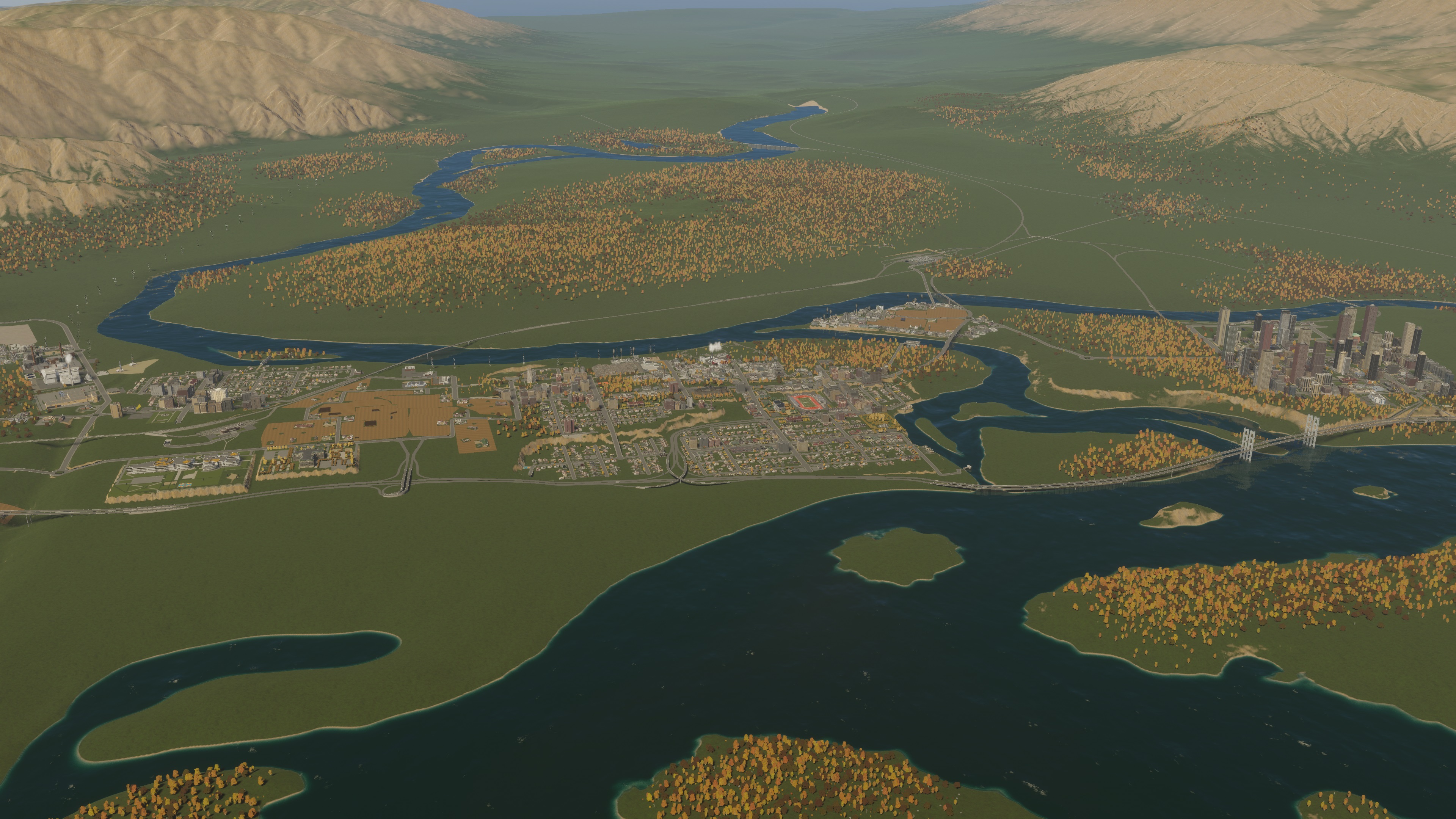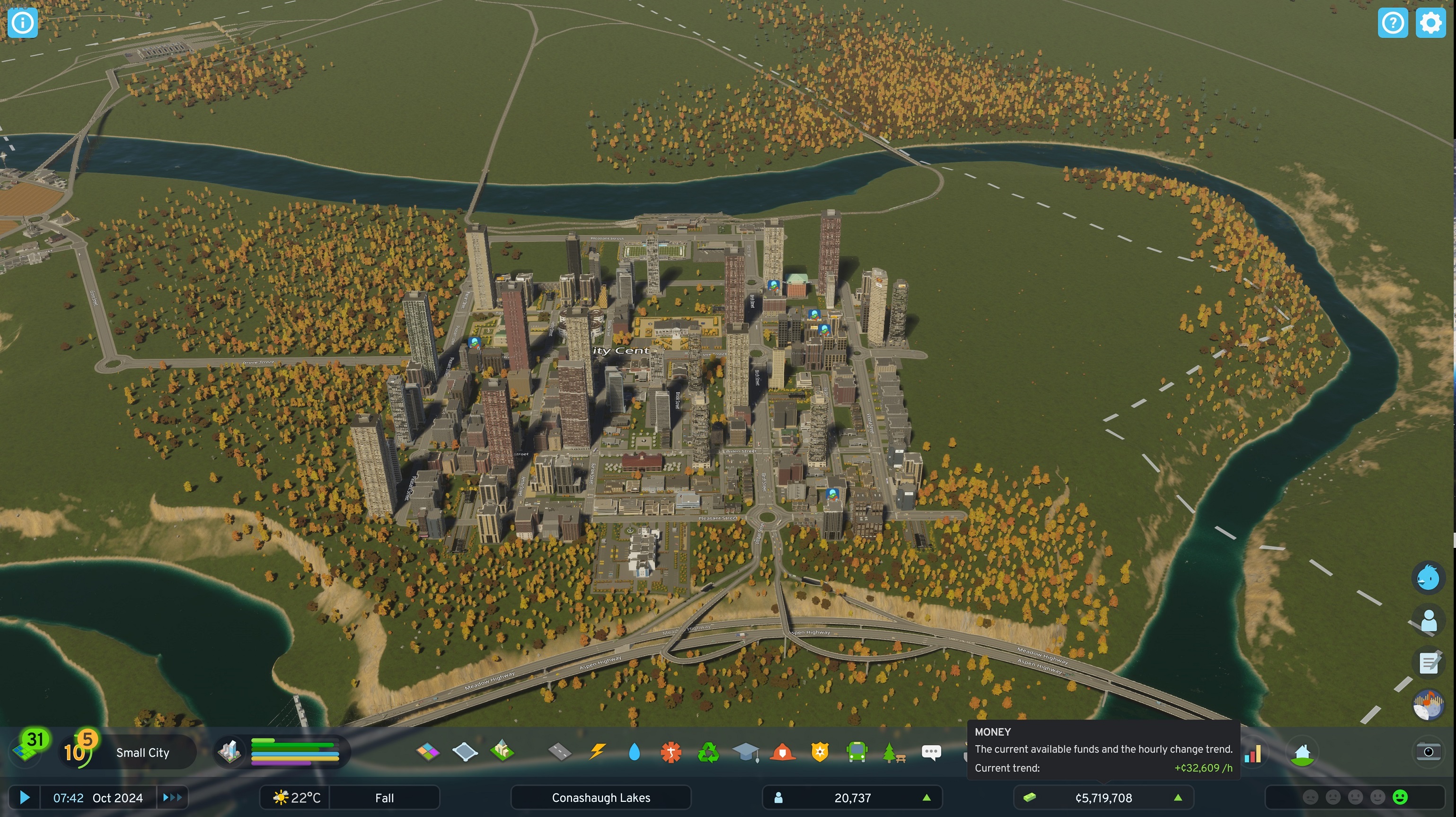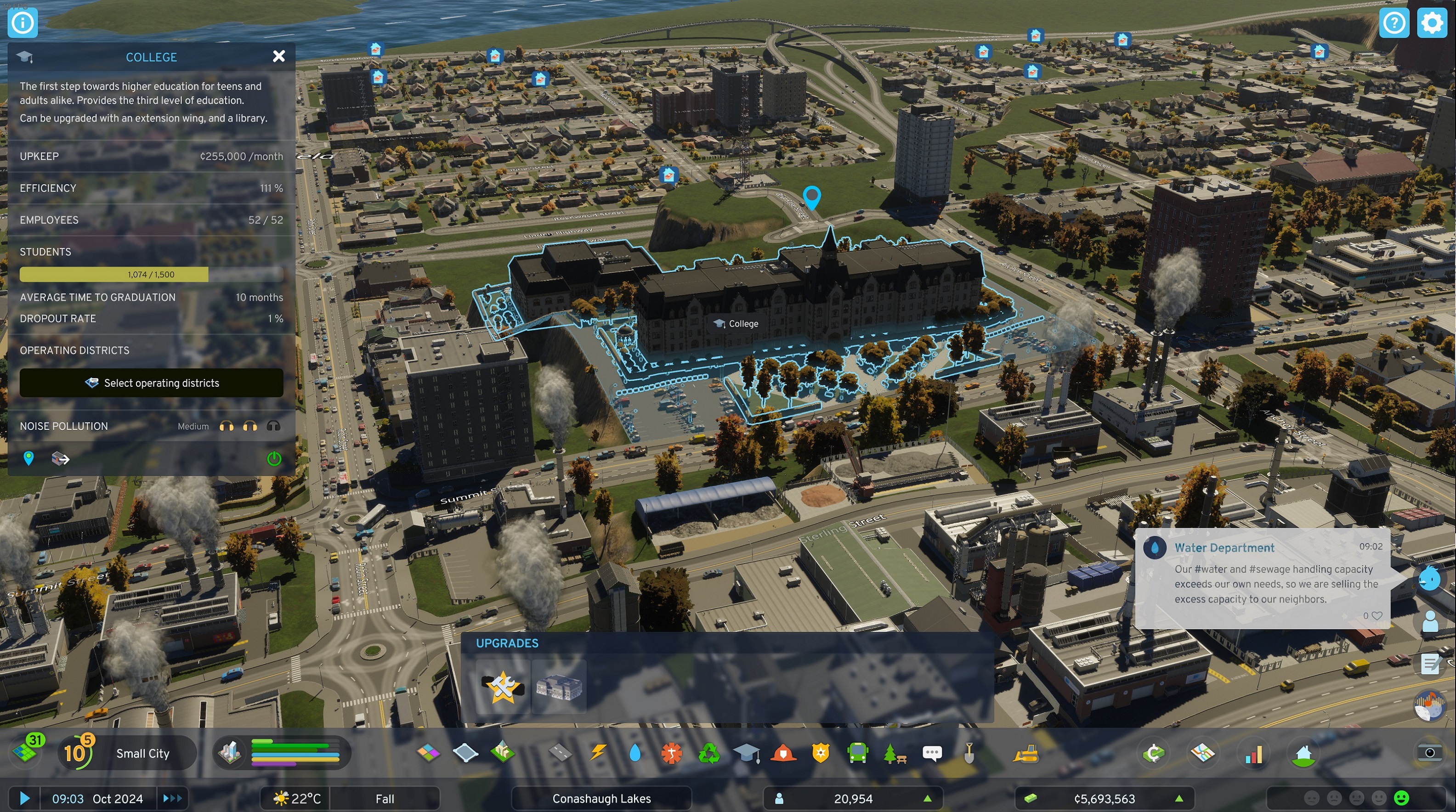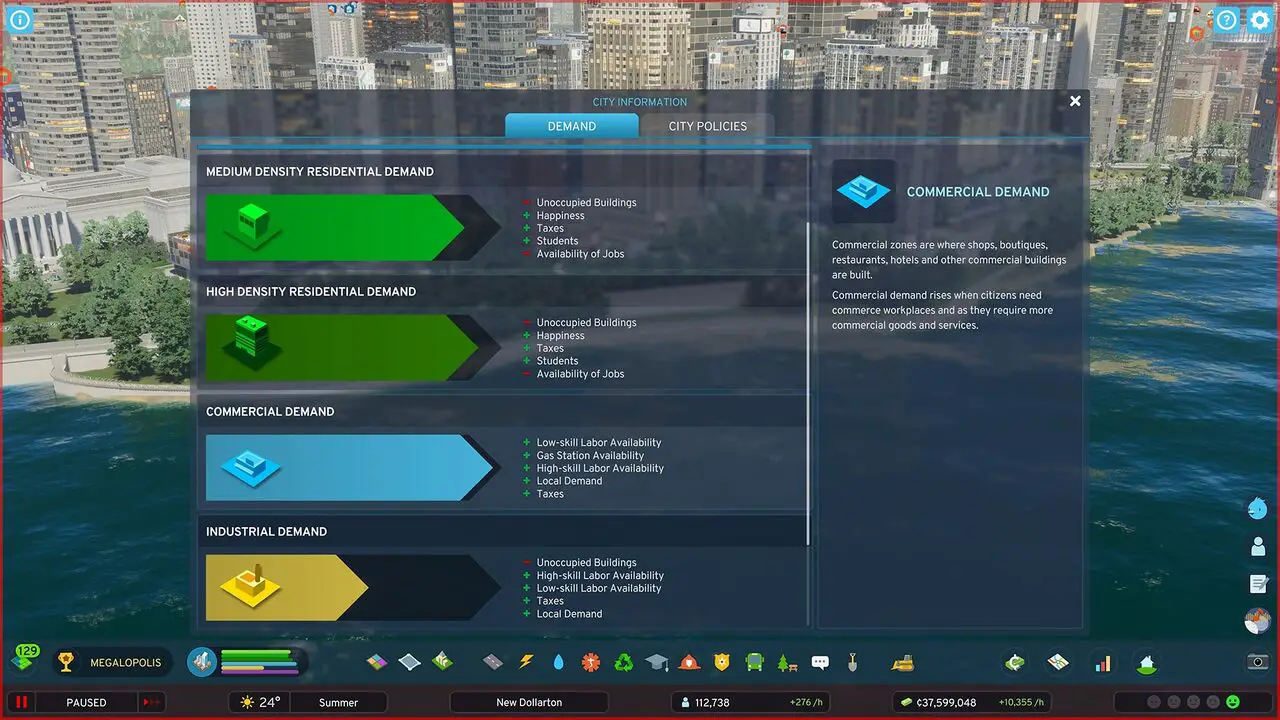This guide will show you some of the most valuable tips on “High Rent”, High Low-Density Demand, Budgets, and Not Enough Costumers in Cities: Skylines 2.
Introduction
I’m not an expert, but like many of you who’ve started playing CS2, I got frustrated with recurring problems, such as a never-ending demand for Low Residential.
After watching helpful videos and restarting, I discovered some things that seem to work. It’s tough to tell if it’s a bug or not because the game isn’t very polished, but it can work with some trial and error.

High Rent and High Low Res Demand
Education
Probably the most important thing to work on is building your college and university early.
You need these two buildings for several reasons.
- Students prefer smaller spaces compared to families, and Low Residential buildings are for families.
- Colleges and universities produce educated and very well-educated people, who are often employed in various buildings, especially office buildings.
- Employment and jobs, which we’ll discuss later, require a mix of different education levels. Your education system should cater to all four education levels:
- Uneducated (level 0)
- Poorly Educated (Elementary)
- Educated (High School)
- Well Educated (College)
- Highly Educated (University)
As you can see in this screenshot, there is low demand for Low Residential, but there’s a healthy demand for Medium and High Residential.

Also, take note of the strong demand for office space.
Your college should attract many students. I improved the situation by adding bus lines that connect to the college.

This doesn’t completely eliminate the High Rent icons, but as you can see, it’s no longer a major problem.
Adding a Technical University is also a good idea because it provides a nice boost to office and industry areas.

Don’t Over Zone Low Res
I also didn’t overzone Low Residential like I used to. Instead, I focused on zoning more Medium Residential when there was demand and occasionally added Low Residential. It’s more about maintaining a balance between employment and available jobs.
Jobs and Unemployment
Unemployment and Jobs
In my first playthrough, you can see that I zoned a lot of Low Residential. However, if you look at my unemployment rate, it’s quite high.


I didn’t realize that I didn’t have enough jobs. I’ve found the information screen, located where the graph icon is on the bottom right, to be incredibly helpful. In the early game, it’s crucial to ensure that there are enough jobs available for your residents.
My New City:

At the beginning of the fifth year, I realized that I needed more jobs for my city. It’s essential to monitor job availability as your city grows.
Detailed View
If you click on any building that employs people, you can hover your mouse over the employees and see a breakdown of their education levels. Here’s an example from the Geothermal Plant.

There are a couple of important things to note:
One, if there are missing employees, the building will not operate at its maximum efficiency. So, in this case, less power would be generated from the Geothermal Plant.
Two, Uneducated Workers should be thought of as level 0, and they are not a distinct education class. Some factories and other buildings will employ them.
Universities of all types produce Highly Educated workers, while Colleges produce Well Educated workers. Understanding the education levels of your workers is crucial for efficient city planning.
Budget

Early Game
In the early stages, I found some valuable advice on YouTube. The suggestion was to build a Geothermal Plant and then use it to export the generated power. I highly recommend finding this video, as it’s easy to follow and put into practice.
Later on, once I unlocked the water treatment plant, I also started exporting excess water. Additionally, I harnessed power from the incineration plant and added it to the export pool. As you can see above, the export fees can be quite substantial.
To export water, make sure to unlock tiles to the edge of the screen. Then, drag a water pipe to the edge, and it will create an outside connection. As far as I can tell, if you’re connected to the outside, any surplus power and water will be automatically sold.
Production
I understand there’s some controversy surrounding how industries work in the game at release. However, I enjoyed constructing raw material industries to make my city self-sufficient. The idea is that your city won’t have to pay to import raw materials like grain or ore, saving you money. Even if there are bugs, these buildings still create jobs, making them worthwhile.
Here’s a tip: If you build ten of each industry building (there are four types), you can unlock a signature building. For example, if you construct ten mining buildings for ore, coal, etc., you’ll unlock a signature factory that provides jobs and special benefits. You don’t necessarily have to zone these areas; once you unlock the signature building, you can delete the excess industry buildings you’re not using.
Taxes and Fees
In terms of taxes, I initially kept them at around 15% and only recently started to lower them. At the beginning, I had negative taxes for well-educated residents to help fill jobs at the power plant. However, once you start producing your own well-educated citizens, you can raise the taxes on them.
If you unlock parking, be aware that parking lots will fill up quickly. I charge at least 15 for parking, which is a 50% increase from the base cost of ten. I also charge for buses, but I usually offer discounts, bringing the price down to around 6. This can help generate some additional revenue for your city.

Please note that this image was saved a little after the first one, so the amounts you see may not add up to the total pictured above. It’s essential to keep an eye on your city’s finances as they can change over time.
Not Enough Costumers
The problem you’re describing has proven challenging to solve, but I’ve found two things that can help alleviate it:
- Parking: Your sims can’t go shopping if they can’t find parking. Building parking spaces can address this issue. In my experience, parking often gets fully utilized shortly after I build it, but it can sometimes help reduce the demand icon.
- Public Transport: Providing your Sims with public transportation options can reduce the need for them to drive to shopping areas. This can be an effective way to combat the issue.
While this might be a bug, it’s likely a combination of different factors that aren’t immediately apparent.

The graphic you’ve shared provides a useful baseline for understanding the requirements of your city and the mix of low and high-skilled labor, which relates to the education level of your citizens. This mix is crucial for addressing various city needs and demands effectively.
That's everything we are sharing today for this Cities: Skylines II guide. This guide was originally created and written by Dave. In case we fail to update this guide, you can find the latest update by following this link.
